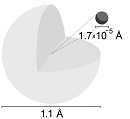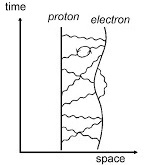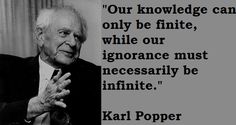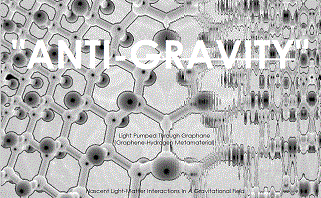"The Flying Car - A Black Swan Hiding In Plain Sight", originally posted on AngelList, May 3, 2016.
KGE is developing an optomechanical photonic pump that allows aerospace enterprises to manage gravity with a device which enhances the inherent capability of matter, e.g., hydrogen, to absorb and expel light, causing continuous loss of mass and radiation pressure.

Two brief LinkedIn articles, Is It Time To Talk About "Anti-Gravity?" and 'Anti-Gravity' Propulsion Technology Startup Proposes Graphene, Carbon Nanotube Hydrogen Light Pump-Jet Thruster are available, as is a more detailed technical description at breakthrough propulsion physics.
This is called "inertial mass reduction", “gravity transparency”, "continuous radiation pressure propulsion", "negative mass propulsion", "The Flying Car", or simply and colloquially, anti-gravity from hydrogen, (slides). Here are a few recent promotional images, anti-gravity technology.
Since the satellite industry currently enjoys far more interest than gravity technology, this should probably be first marketed along the lines of "continuous photonic propulsion -- the light-burner" or the "hydrogen light pump-jet" for a solar electric propulsion satellite. Green propulsion thrusters", anti-gravity metamaterials or a propellantless propulsion system are other possible marketing angles. It's also much easier to start on a small scale. Once the effort draws interest, its astounding capabilities and larger applications should become clear. There will be no going back.
1. What is the business problem you are solving?
Everybody wants cheaper transportation, but aerospace companies pay too much to produce what they sell. They are coasting on the inertia
of historical technological development. They need reusable,
cheaper, renewable, sustainable, more efficient and never-ending
reloadable fuel. Their "pain" is that they know something far better
must be out there, but have no idea what that might be. KGE relieves that pain with a "black swan" solution five hundred years ahead of its
time. We remove a technological barrier
by re-framing gravity, disrupting the current stagnation, and addressing the problem with an actionable solution.
Inspired by nature itself and informed by science, KGE provides a
valuable, singular update from current Newtonian-based technology by using
relativity theory. This is a major upgrade, removing pain most
people don't even know they have, ticking along with pre-Einstein
solutions. The true pain here is incalculable, the human problem of
being a single planet species. The solution is hiding in plain
sight, "unknown public information*”, as it were, and is best
actualized through the entrepreneurial system, which is obligated to
pursue it. That's you.
2. What
is your specific solution and value proposition?
 KGE's solution is its device to manage gravity. This is highly valuable to
customers due to a first-(and only)-of-a-kind scarcity which provides
exponentially superior, i.e., billions and trillions, not mere “10x”,
cost efficiency. Of course, this will require a technical
explanation to technical people, but simply, recall that only two
pounds of plutonium exploding caused Hiroshima. That is the kind of capability in nature we are harnessing, and we do it repeatedly, in the femtosecond range which nature allows. Imagine that kind of efficiency used to smoothly overcome gravity with continuous radiation pressure. This new approach has
no competition (other than the current old approaches) and is
protected by both a provisional utility patent and trade secret law.
No one else is proposing passing light through matter continuously,
they're only using Newtonian “one and done” explosions to create
“force” and similar concepts. Quantifying the value in customer
terms, once understood, this is nothing less than a “must-have”.
KGE's solution is its device to manage gravity. This is highly valuable to
customers due to a first-(and only)-of-a-kind scarcity which provides
exponentially superior, i.e., billions and trillions, not mere “10x”,
cost efficiency. Of course, this will require a technical
explanation to technical people, but simply, recall that only two
pounds of plutonium exploding caused Hiroshima. That is the kind of capability in nature we are harnessing, and we do it repeatedly, in the femtosecond range which nature allows. Imagine that kind of efficiency used to smoothly overcome gravity with continuous radiation pressure. This new approach has
no competition (other than the current old approaches) and is
protected by both a provisional utility patent and trade secret law.
No one else is proposing passing light through matter continuously,
they're only using Newtonian “one and done” explosions to create
“force” and similar concepts. Quantifying the value in customer
terms, once understood, this is nothing less than a “must-have”.
3. How big and growing is the total market and your target segment?
The
target segment here is the entire transportation sector, except
recreational. Predictably, my personal feeling is that trillions of
dollars will flow from this concept. But then, I'm putting it out
there mainly because I stumbled upon something very useful, not to make
money. Once it is understood what is described here, money sort of
loses its meaning, even to those of us that still need it. Growth
rate predictions are similarly not meaningful. It's probably a
paradigm-shifting one-of-a-kind black swan, but possibly just a tin foil hat pipe
dream. As someone who made quantified business risk decisions for
many years, I wish I could be more helpful. But you'll first have to
understand the science, then look at the history of technological
development, especially the disruptions, and use your own best
judgment. Pick a heuristic, I had to do that too over the years.
Eyeball it. Gut feel it. Maybe hear me out, then grill me with
questions. Nature and science make the case for themselves.

4. How
does your business model make money?

Currently, the seat-of-the-pants plan is to license the technology to
aerospace and transportation enterprises, then perhaps take over a
few of those. Eventually, through us or others, it will extend to a
much broader customer base and the individual consumer. Almost
complete market penetration is expected, it's for everybody who moves
anything or goes anywhere. KGE's current strengths are in firing the
imagination and explaining technical possibilities, not business
modeling.
It is recognized that expert help is needed here.
5. Who
are your competitors, and how do you win?
The
top three competitors are hydrocarbon and chemical combustion or
combination, as well as concepts such as the solar sail, EM drive,
Cannae or Q-Drive, and others. These are mostly Newtonian, using
quaint concepts like thrust and force. Their only advantage is as
legacy systems. Each competitor can be compared and contrasted in great detail and they are discussed on the confidential website.
That's probably better-suited for a long pitch with Q&A than
here. KGE's general advantage is the enlightened use of relativity
theory. We have a much clearer picture of gravity, and transcend current
engineering informed mostly by Newtonian thought. Goddard and the
Wright Brothers didn't know what we do now, and yet we are still
using their systems. Who has re-visited all this on a clean sheet of
paper? KGE has. We argue that nature and science make this solution
inevitable. Its only barriers are that it is nascent, unknown and
unvetted, with no traction. Other than that, things are going great,
with the future still stuck on the AngelList Blog. But yet another advantage we have is that there is an AngelList Blog, and
ideas can be shared quicker than in Goddard's and the
Wright Brothers' time. So, the future won't be stuck here for long. As
those innovators previously demonstrated, nature's superior solutions
simply will not be denied.

6. What are your specific marketing and sales plans?
It
might be best to position this as a "strategic acquisition”, a
“must have” to be “first to market” and carrying an
unfathomably large opportunity cost risk. It seems like a perfect
vanity project for tech companies and venture capitalists flush with
cash and looking for more headlines, which would later filter into
established aerospace concerns**. Then again, that directly
contradicts what was said above in 4. So, as you can see, the vision
here is about as sophisticated as Bill Gates' dad's personal computer
market projections in 1980. For now, it's ad hoc and week-to-week
until this attracts some attention. As soon as it's even taken
half-seriously, the cache of being even marginally involved with
this should attract them like flies. That's just human nature. But
this time, the next big thing really is that big.
Further, as
a highly speculative potential black swan with a nascent, unvetted
technology, first let us say we will never, ever use words like
“rollout”, nor will we “drop”. We can try to make our best
guess as to strategic partners, and are actively looking for advisors
and industry connections. Our unused "potential customers" slide says “Insert Gratuitous Logos Here”, because that sort of
unseemliness is usually pure fluff. Specific milestones include “Get
Attention ASAP” and the like. I once planned and scheduled the
entire Hot Functional Test (HFT) milestone for startup of a nuclear
plant and can't make up phony “milestones” here and now for this; it's too soon. It'll be typical product development for hardware,
that's the template. For the record, there are primitive prototype
pieces sitting in my kitchen, and it may be possible to make a little
video once this post is done. Until then, I can easily make do with
“antigravity” examples such as levitating water, to wit, clouds, which have the distinct advantage of
already existing.
as
a highly speculative potential black swan with a nascent, unvetted
technology, first let us say we will never, ever use words like
“rollout”, nor will we “drop”. We can try to make our best
guess as to strategic partners, and are actively looking for advisors
and industry connections. Our unused "potential customers" slide says “Insert Gratuitous Logos Here”, because that sort of
unseemliness is usually pure fluff. Specific milestones include “Get
Attention ASAP” and the like. I once planned and scheduled the
entire Hot Functional Test (HFT) milestone for startup of a nuclear
plant and can't make up phony “milestones” here and now for this; it's too soon. It'll be typical product development for hardware,
that's the template. For the record, there are primitive prototype
pieces sitting in my kitchen, and it may be possible to make a little
video once this post is done. Until then, I can easily make do with
“antigravity” examples such as levitating water, to wit, clouds, which have the distinct advantage of
already existing.
Things like
pricing details and sales channels are too far ahead to speculate
upon. Although our customized marketing plan – be the first on
your block to jump ahead five hundred years – is pretty solid.
So, as you
can see, and all kidding aside, this needs your help.
7. How is your team uniquely qualified for this venture?
The
team right now is nature as it exists, the science that describes it,
and me, Bryan Kelly. Briefly, I inquired, made observations, used intuition, became inspired and put together a technical argument from Google
Scholar and the Georgia Tech library. Then I expressed it in patent
language. It was all on my own, entirely self-motivated, and not
part of any company or institution, about as unique as it gets. I
know the energy domain from the standpoint of engineering and
construction for electric utilities, mostly nuclear, and later, as a result of this inspiration, intuition and in-depth scientific research. The project began when I was starting back into nuclear construction
a few years ago, after decades elsewhere, and became inordinately interested
in physics, electricity and gravity.
 I am literally a Westinghouse baby from Pittsburgh, where he built his company, who
grew up around a previous era of innovation. As the type who visited
the Wright Brothers' Kitty Hawk memorials as a kid on vacation, I
can see why they risked bankruptcy to give us what we have today.
When an idea like this takes hold, you
are in its thrall and unstoppable. It takes on a life of its own.
Now I'm looking to build a team that loves this one and can manage
its execution. My role here is mainly to initiate and lead, because
I envisioned what can be accomplished and laid out a plan in the form of a
patent. I've run teams before where I had ultimate P&L
responsibility, but in a different sphere, and I'm probably
well-rounded enough to pass your basic competency test. As for
chemistry, culture and other such frivolities, you will have to
judge. I am just here to get this done, no matter what it takes.
Email and arrange a phone call. On the other side of this blog post is an idea far more important and “investable” than
myself or any team.
I am literally a Westinghouse baby from Pittsburgh, where he built his company, who
grew up around a previous era of innovation. As the type who visited
the Wright Brothers' Kitty Hawk memorials as a kid on vacation, I
can see why they risked bankruptcy to give us what we have today.
When an idea like this takes hold, you
are in its thrall and unstoppable. It takes on a life of its own.
Now I'm looking to build a team that loves this one and can manage
its execution. My role here is mainly to initiate and lead, because
I envisioned what can be accomplished and laid out a plan in the form of a
patent. I've run teams before where I had ultimate P&L
responsibility, but in a different sphere, and I'm probably
well-rounded enough to pass your basic competency test. As for
chemistry, culture and other such frivolities, you will have to
judge. I am just here to get this done, no matter what it takes.
Email and arrange a phone call. On the other side of this blog post is an idea far more important and “investable” than
myself or any team.
8. How
big is the funding request, and how much equity will you give?
I
don't know what kind of funding to request as yet. I've put in about
five years of sweat equity, but it was a labor of love. Now I'm
looking for your sweat equity, which is simply interest in the
project, first. Then we can plan and phase this as with any product
development project. I know what has to be done, but not how to do
it, in a business sense. I made a lot of deals in my attorney days, and
easily admit I don't know enough to have an informed opinion. I'm
still learning these deal structures and what might be the
right-sized fund and ask. I'm probably a higher equity, lower dollar
type, with everything phased slowly. There is no need to have
all the answers right now. I'm here to start something, but not an early
career empire builder planning on sticking around forever. I will
get you on the right path, then you run with it. And if it's your
money that makes this happen, you might want your own people in there
asap – I get it it, experienced product development people. I
recognize that I'm older, and a founder that will likely cede easily,
when the inevitability of success becomes evident. Until then, I see
myself as the reality distortion field remover when the “it can't
be dones” happen, because nature already does it and science tells
us how. I will kick your backward asses until you understand that
and make it happen. When you understand the consequences here, you
will see why the current valuation estimate is “approaching
infinity”, and why startup-experienced people are needed to do this
right the first time, not a first-timer like me, guessing at it.
9. What
are your forecasts for revenue, expenses and cash flow?
This
is the undiscovered country, a potential black swan. You are either
intoxicated by the prospect of becoming a multi-planet species by
now, or a drive-by. I can not answer this question honestly without
a lot of 0's and infinity signs. Divide those, and you have your
cost/benefit. In the middle, maybe tens, or even hundreds of millions. Upside,
trillions. Current cash flow 0. Get the picture?

Cash flow, as I see it, is most-closely correlated to say, sitting on a hydrogen atom as light is absorbed and emitted at the speed of light, and how very few of those it might take to make my car massless on this Earth with its weak gravity, itself moving through space away from me now at 67,000 miles-per-hour or more as I stay in place, transparent to gravity. Would a soup can size suffice? Maybe it would take a coffee can. Also, as an afterthought, somebody might pay for something along those lines. That's the plan.
Cost and
schedule planning and forecasting used to be my job, later it was analyzing risk. But those all involved previous similar undertakings and
projects. Engineering and construction is somewhat similar to
product development, and yes, I've had P&L responsibility, in the
low 100 millions. I get it. When somebody becomes interested we can
hone this down and start doing things in phases. But I'm looking for a
"We have to have this!" instead of, "Well, what's the
EBITDA multiple?" **
10. How
much and when do you foresee investors getting a payout?
This
could go either M&A, outright sale or IPO. Quickly, or in ten
years. Of course it will make money – it's the most imaginative
transportation method proposed in human history. Ok, maybe “the
wheel” was more impressive, I admit it. The question for you right
now is: “Do I have any interest in gravity technology?” If you
only have two nickels to rub together but know what to do here and
can help, let's talk. My current favorite "comparable" company story is French Giant Veolia To Buy Nuclear Waste Cleanup Startup Kurion. Very
roughly, it was a highly technical idea on the back of an envelope,
with five million in, $365 million came out in less than ten years.
This
will either be far better than that or is a complete joke. Let's
find out.
The
source for those ten questions is: 10 Answers That Will Make Your Startup Plan Worthy of Investment.
Additional
Comments
Never heard
of this? Don't worry, virtually no one has. I can find no evidence that this idea has ever even been considered before. Not a single musing. That's how fresh it is.
When you get into it, you will see that for yourself. You are
probably among the very first to see what is inevitably
going to happen. It's not like I can present this at the local
solar-powered propeller hat app pitch fest. You've likely been
targeted.
This is one
of two black swans involved in this proposed KGE unicorn. That said,
I freely acknowledge the tin foil hat nature of my proposals. But
coming from the Karl Popper school, may I say that you are welcome to
try to falsify what I've found – because I can not.
You have a
strong interest in the future and big ideas, not incremental
iterations of a 2% improvement of the same old shinola. Deep reality
seems far more fascinating to you than virtual toys. Lukewarm is
something you are not. You are not a drive-by, formulaic, incurious,
throwing spaghetti-at-the-wall statistical investor – not that there's
anything wrong with that. You are looking for a mini-Manhattan
Project, from and for visionaries, at its nascent conceptual stage.
Expect no spreadsheets here. I want your interest and advice before
I ask for any money anyway. It's easier to throw a few bucks at
everything and hope something works, than to understand anything.
While I understand and respect that approach, this is not the place
for it.

Here, you will
be required to stop talking about the “cutting edge” and actually
understand what it is. And it is simple and correct, not a
contrived, iterated, incremental fad that is going to seem like
something for a little while then fade away. We are going to need to
hire some specialists of course, mostly in optomechanics, a field
full of knowledge looking for something useful to do, physicists, hydrogen and photonics experts, materials types, as well
as all kinds of other interesting engineers and experts. But that'll
cost nickels and dimes compared to the frivolous nonsense we both
still see daily, even in the hard science side of start-up, and
especially on the energy-related side of that side. Sure, I love my 140 characters, but KGE is the actual flying car. KGE is the actual too cheap to meter.
The “proof
of concept” here is nature itself. We are simply
reverse-engineering. I didn't come about it that way, but that is
its essence. That's the paradigm shift. There are no disputes about
nature's best (or at least far better) ways of doing certain things, but people haven't always looked at engineering solutions with that in
mind. That in itself is natural, they're just following the path of
accidental discovery and happenstance development. Why? Because
it's easier than thinking too hard. "Somebody else smarter than me
will do that", right? Not necessarily.
 The hard
science and everyday examples, prototypes that are archetypes, speak
for themselves. Once you understand that, and most especially the scale of
large numbers of small things doing small things repeatedly on infinitesimal time scales, and how that adds up to very large things on our human
scale, you'll see that
there is only relatively easily-achievable grunt work left to make it
happen. Remember those two pounds of Hiroshima plutonium? Now imagine that kind of efficiency at a billion trillion times a second, but used to smoothly overcome gravity with continuous radiation pressure. One might call this design philosophy “technology informed
by teleology”, unlocking the beautiful simplicity and utility of
that which is.
The hard
science and everyday examples, prototypes that are archetypes, speak
for themselves. Once you understand that, and most especially the scale of
large numbers of small things doing small things repeatedly on infinitesimal time scales, and how that adds up to very large things on our human
scale, you'll see that
there is only relatively easily-achievable grunt work left to make it
happen. Remember those two pounds of Hiroshima plutonium? Now imagine that kind of efficiency at a billion trillion times a second, but used to smoothly overcome gravity with continuous radiation pressure. One might call this design philosophy “technology informed
by teleology”, unlocking the beautiful simplicity and utility of
that which is.
 The way
we're doing things now works fine, too. I like my gasoline car,
fossil and nuclear electricity, but they're suboptimal, and many of
these so-called new technologies are just laughable. Our current
technology is not wrong, but we forget that it came about
accidentally through happenstance. And for the most part, it has not
been updated since Einstein, let alone kept current. I argue that we
don't have to move forward based on that past. Have Goddard's
methods been re-considered in light of relativity theory? How far
has flight come since say, the 1950s?
The way
we're doing things now works fine, too. I like my gasoline car,
fossil and nuclear electricity, but they're suboptimal, and many of
these so-called new technologies are just laughable. Our current
technology is not wrong, but we forget that it came about
accidentally through happenstance. And for the most part, it has not
been updated since Einstein, let alone kept current. I argue that we
don't have to move forward based on that past. Have Goddard's
methods been re-considered in light of relativity theory? How far
has flight come since say, the 1950s?
Isn't it time to take a breath and revisit all that?
Contact bk@suretyinsider.com
to arrange a phone call.
Thank you.
* The Half Life Of Facts
** VC Investor Lessons From the Past 12 Years: Exits



 KGE's solution is its device to manage gravity. This is highly valuable to
customers due to a first-(and only)-of-a-kind scarcity which provides
exponentially superior, i.e., billions and trillions, not mere “10x”,
cost efficiency. Of course, this will require a technical
explanation to technical people, but simply, recall that only two
pounds of plutonium exploding caused Hiroshima. That is the kind of capability in nature we are harnessing, and we do it repeatedly, in the femtosecond range which nature allows. Imagine that kind of efficiency used to smoothly overcome gravity with continuous radiation pressure. This new approach has
no competition (other than the current old approaches) and is
protected by both a provisional utility patent and trade secret law.
No one else is proposing passing light through matter continuously,
they're only using Newtonian “one and done” explosions to create
“force” and similar concepts. Quantifying the value in customer
terms, once understood, this is nothing less than a “must-have”.
KGE's solution is its device to manage gravity. This is highly valuable to
customers due to a first-(and only)-of-a-kind scarcity which provides
exponentially superior, i.e., billions and trillions, not mere “10x”,
cost efficiency. Of course, this will require a technical
explanation to technical people, but simply, recall that only two
pounds of plutonium exploding caused Hiroshima. That is the kind of capability in nature we are harnessing, and we do it repeatedly, in the femtosecond range which nature allows. Imagine that kind of efficiency used to smoothly overcome gravity with continuous radiation pressure. This new approach has
no competition (other than the current old approaches) and is
protected by both a provisional utility patent and trade secret law.
No one else is proposing passing light through matter continuously,
they're only using Newtonian “one and done” explosions to create
“force” and similar concepts. Quantifying the value in customer
terms, once understood, this is nothing less than a “must-have”.



 as
a highly speculative potential black swan with a nascent, unvetted
technology, first let us say we will never, ever use words like
“rollout”, nor will we “drop”. We can try to make our best
guess as to strategic partners, and are actively looking for advisors
and industry connections. Our unused "potential customers" slide says “Insert Gratuitous Logos Here”, because that sort of
unseemliness is usually pure fluff. Specific milestones include “Get
Attention ASAP” and the like. I once planned and scheduled the
entire Hot Functional Test (HFT) milestone for startup of a nuclear
plant and can't make up phony “milestones” here and now for this; it's too soon. It'll be typical product development for hardware,
that's the template. For the record, there are primitive prototype
pieces sitting in my kitchen, and it may be possible to make a little
video once this post is done. Until then, I can easily make do with
“antigravity” examples such as levitating water, to wit, clouds, which have the distinct advantage of
already existing.
as
a highly speculative potential black swan with a nascent, unvetted
technology, first let us say we will never, ever use words like
“rollout”, nor will we “drop”. We can try to make our best
guess as to strategic partners, and are actively looking for advisors
and industry connections. Our unused "potential customers" slide says “Insert Gratuitous Logos Here”, because that sort of
unseemliness is usually pure fluff. Specific milestones include “Get
Attention ASAP” and the like. I once planned and scheduled the
entire Hot Functional Test (HFT) milestone for startup of a nuclear
plant and can't make up phony “milestones” here and now for this; it's too soon. It'll be typical product development for hardware,
that's the template. For the record, there are primitive prototype
pieces sitting in my kitchen, and it may be possible to make a little
video once this post is done. Until then, I can easily make do with
“antigravity” examples such as levitating water, to wit, clouds, which have the distinct advantage of
already existing.
 I am literally a Westinghouse baby from Pittsburgh, where he built his company, who
grew up around a previous era of innovation. As the type who visited
the Wright Brothers' Kitty Hawk memorials as a kid on vacation, I
can see why they risked bankruptcy to give us what we have today.
When an idea like this takes hold, you
are in its thrall and unstoppable. It takes on a life of its own.
Now I'm looking to build a team that loves this one and can manage
its execution. My role here is mainly to initiate and lead, because
I envisioned what can be accomplished and laid out a plan in the form of a
patent. I've run teams before where I had ultimate P&L
responsibility, but in a different sphere, and I'm probably
well-rounded enough to pass your basic competency test. As for
chemistry, culture and other such frivolities, you will have to
judge. I am just here to get this done, no matter what it takes.
Email and arrange a phone call. On the other side of this blog post is an idea far more important and “investable” than
myself or any team.
I am literally a Westinghouse baby from Pittsburgh, where he built his company, who
grew up around a previous era of innovation. As the type who visited
the Wright Brothers' Kitty Hawk memorials as a kid on vacation, I
can see why they risked bankruptcy to give us what we have today.
When an idea like this takes hold, you
are in its thrall and unstoppable. It takes on a life of its own.
Now I'm looking to build a team that loves this one and can manage
its execution. My role here is mainly to initiate and lead, because
I envisioned what can be accomplished and laid out a plan in the form of a
patent. I've run teams before where I had ultimate P&L
responsibility, but in a different sphere, and I'm probably
well-rounded enough to pass your basic competency test. As for
chemistry, culture and other such frivolities, you will have to
judge. I am just here to get this done, no matter what it takes.
Email and arrange a phone call. On the other side of this blog post is an idea far more important and “investable” than
myself or any team.


 The hard
science and everyday examples, prototypes that are archetypes, speak
for themselves. Once you understand that, and most especially the scale of
large numbers of small things doing small things repeatedly on infinitesimal time scales, and how that adds up to very large things on our human
scale, you'll see that
there is only relatively easily-achievable grunt work left to make it
happen. Remember those two pounds of Hiroshima plutonium? Now imagine that kind of efficiency at a billion trillion times a second, but used to smoothly overcome gravity with continuous radiation pressure. One might call this design philosophy “technology informed
by teleology”, unlocking the beautiful simplicity and utility of
that which is.
The hard
science and everyday examples, prototypes that are archetypes, speak
for themselves. Once you understand that, and most especially the scale of
large numbers of small things doing small things repeatedly on infinitesimal time scales, and how that adds up to very large things on our human
scale, you'll see that
there is only relatively easily-achievable grunt work left to make it
happen. Remember those two pounds of Hiroshima plutonium? Now imagine that kind of efficiency at a billion trillion times a second, but used to smoothly overcome gravity with continuous radiation pressure. One might call this design philosophy “technology informed
by teleology”, unlocking the beautiful simplicity and utility of
that which is.
 The way
we're doing things now works fine, too. I like my gasoline car,
fossil and nuclear electricity, but they're suboptimal, and many of
these so-called new technologies are just laughable. Our current
technology is not wrong, but we forget that it came about
accidentally through happenstance. And for the most part, it has not
been updated since Einstein, let alone kept current. I argue that we
don't have to move forward based on that past. Have Goddard's
methods been re-considered in light of relativity theory? How far
has flight come since say, the 1950s?
The way
we're doing things now works fine, too. I like my gasoline car,
fossil and nuclear electricity, but they're suboptimal, and many of
these so-called new technologies are just laughable. Our current
technology is not wrong, but we forget that it came about
accidentally through happenstance. And for the most part, it has not
been updated since Einstein, let alone kept current. I argue that we
don't have to move forward based on that past. Have Goddard's
methods been re-considered in light of relativity theory? How far
has flight come since say, the 1950s?
